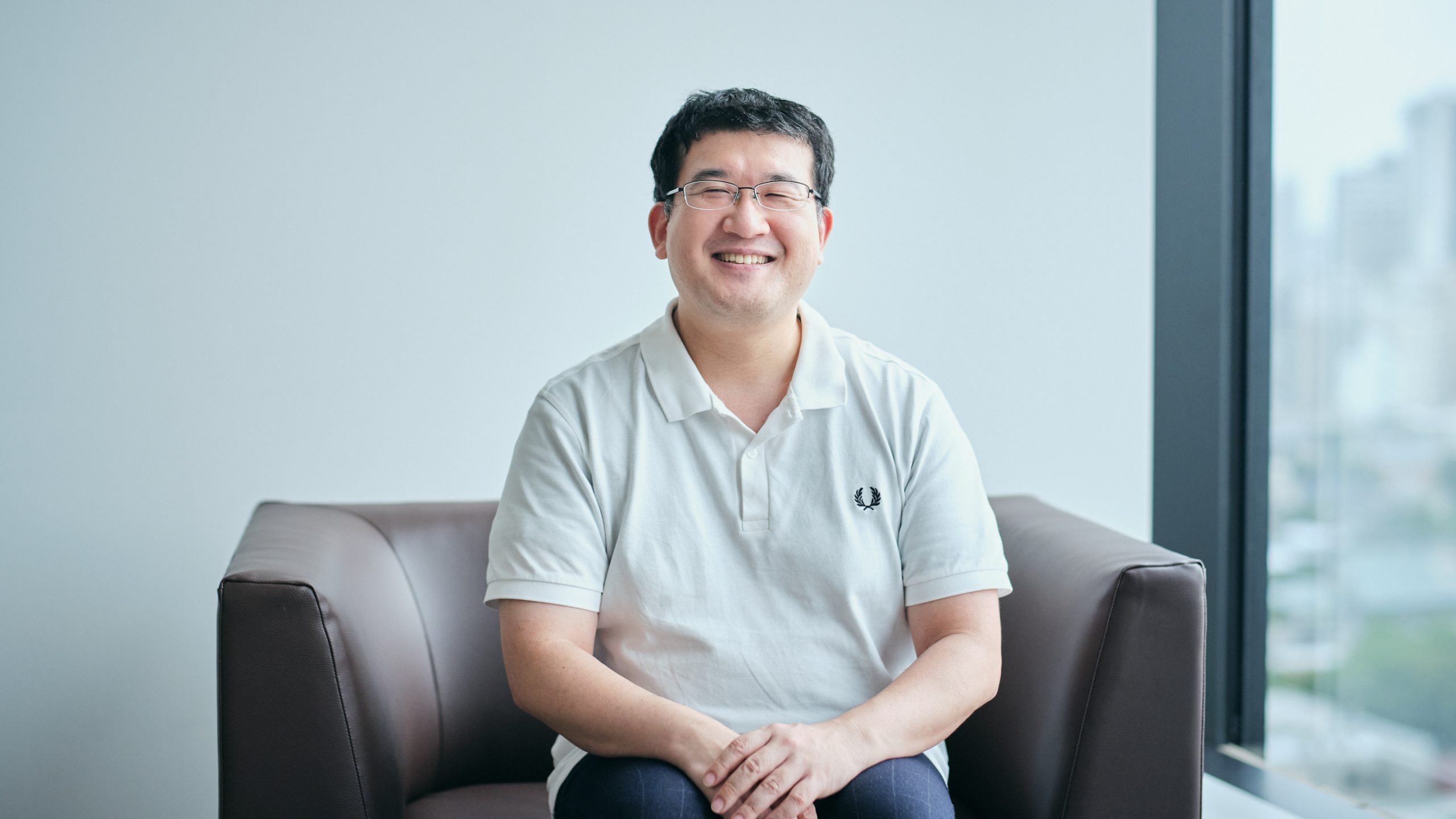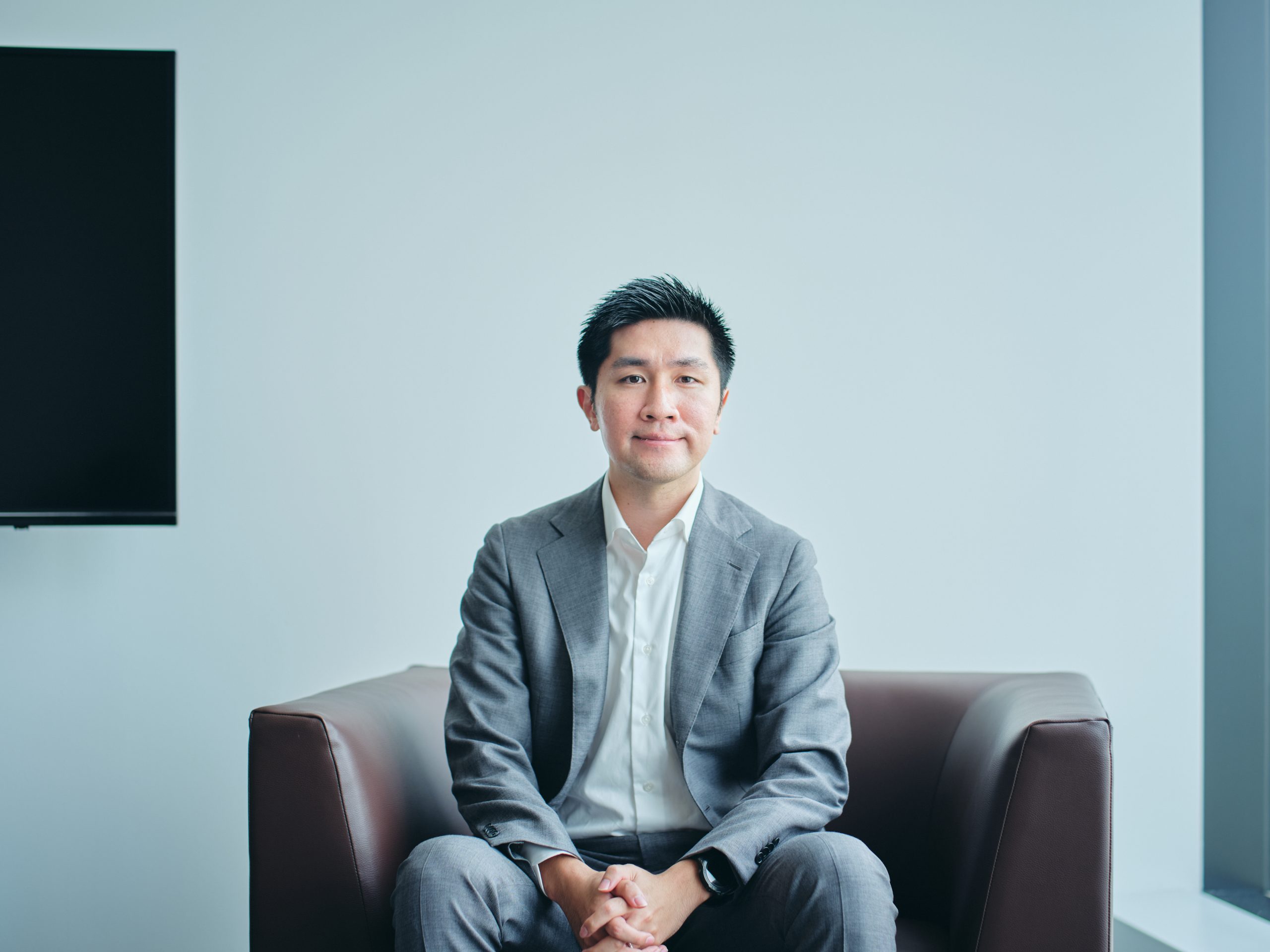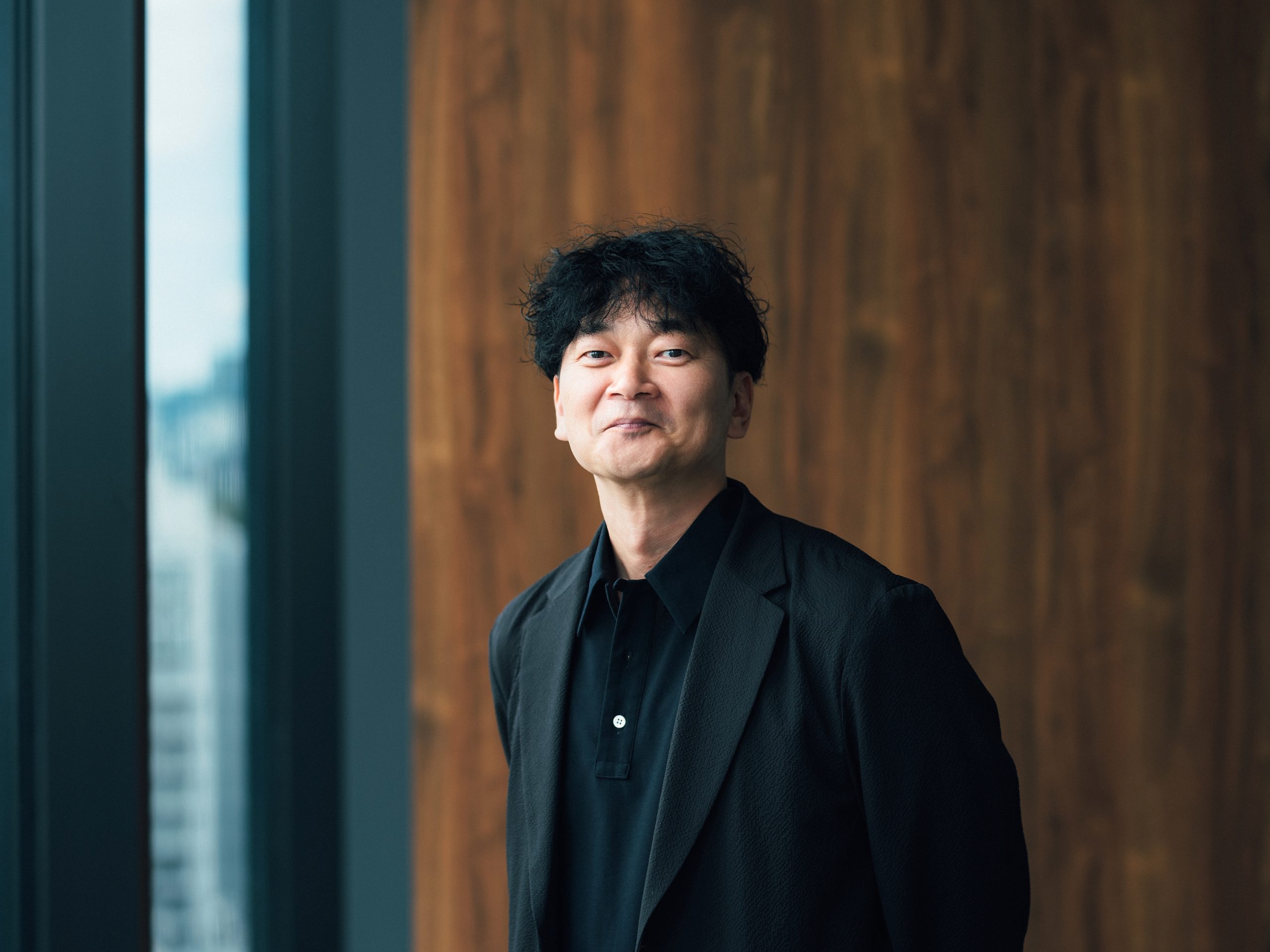
COVER Corp. is the company developing the VTuber agency hololive production and the Metaverse project Holoearth. Embarking on its journey with VR technology, the company has now grown into an integrated entertainment company that is expanding globally.
At the core of this growth is Director and CTO Ikko Fukuda, who has driven COVER's technology strategy since its founding. Mr. Fukuda launched COVER together with CEO Motoaki Tanigo based on their shared vision of "empowering individuals through the Internet". From VR to VTubers and to the Metaverse, COVER has been exploring new possibilities for expression using technology.
We had an in-depth conversation with Mr. Fukuda in about COVER's technology strategy, which focuses on "a sense of reality'" and continues to drive technological innovation to connect the world through technology, as well as taking on the challenge of creating the future of new entertainment.
We asked about COVER's technology strategy, which continues to drive technological innovation, and its challenge to create the future of new entertainment.
“How to empower individuals”: The shared ambition and the encounter with CEO Tanigo, which became the catalyst for founding COVER.
Please tell us about your background before starting COVER Corp. and how you met President and CEO Tanigo.
Before launching COVER with Tanigo, I served as CTO at Agile Media Network Inc., where I was in charge of advertising systems for social media and campaign systems. That company hosted pitch contests for startups, and around 2009, Tanigo was on the stage as a participant. After Tanigo and I talked at the wrap-up party, we continued to exchange information since we lived in the same neighborhood.
At the time, Tanigo was running the day-trip outing information service “30min.” at San Zero Minute Co., Ltd. and was interested in the emerging era where individual creators and bloggers could share their content. I myself had a strong interest in how to empower individuals on the Internet, and we used to talk about that.

So you had some shared ambitions. How did you go from there to starting up COVER?
Tanigo and I started exchanging information about VR around 2015, when I was leaving the company I was working at to start my own business. At the time, mobile gaming platforms such as the App Store had already been established. And while we were exploring what we could do with VR, we often talked about how the next platform would likely be VR.
Next, we received funding from Hironao Kunimitsu of gumi Inc. and launched an acceleration program called Tokyo VR (now XR) Startups. We spent the next six months creating a product and started developing the VR table tennis game “Ping Pong League”. We spent six months exploring and creating, but when we were approaching the final two months, we began to question whether VR games like table tennis were really right for the technology.
At the time, Kizuna AI was trending, reaching 300,000 subscribers worldwide. Live streaming by those called “livers” was also starting to take off. Seeing these trends, Tanigo and I began to develop a concept to create a platform that allows virtual characters to be streamed in real time, which led to the development of VTuber.
After that, in 2017, COVER debuted its first VTuber, Tokino Sora. When we reached the point where 20,000 viewers were watching her on the live stream 17LIVE, we felt we were on to something. This became the prototype of the current hololive production and has grown to this day.
“How far can we pursue a sense of reality?” Starting with motion capture using VR technology, COVER takes on the challenge of new expression technology using the Unreal Engine.
COVER went public six years after that and has made great strides, including expanding globally. Did you envision COVER growing to this scale back then? Can you also tell us what made VTuber and holo production grow so big and what you’ve valued throughout this process?
As for the goal, I had imagined COVER would grow to its current scale. Yet growth was faster than I anticipated because the VTuber culture took root in the world quickly. Around 2017, YouTube live streaming was becoming more popular, and that time was one in which experiences that allowed for real-time interaction were gradually becoming more accepted. In tandem with this, the VTuber streaming culture was embraced, and the excitement over the VTuber industry as a whole was a major tailwind for COVER. On the other hand, in 2017, there were four streamers dubbed the “Four Heavenly Kings of VTubers”, but I was a little disappointed that hololive’s performers weren’t included among them.
At the time, VTuber broadcasts were mainly video content because live streaming was technically difficult. However, COVER made great advances by using VR equipment as motion capture technology, enabling long-time streaming. Back then, motion capture technology was limited to about 30 minutes of operation, but we were able to leverage the properties of VR equipment to achieve real-time streaming technology.
Next, we developed Live2D face tracking. Previously, 3D model VR was limited by equipment and location. But by developing a smartphone app, we made it possible to stream content at any time without the need for extensive equipment. This thus enabled content streaming multiple times a day, greatly improving the level of real-time streaming.
In those days, COVER was a small company with only two or three employees and six outsourcers. What I valued was how far we could pursue a sense of reality. It is important to create the sense that there is a real person there, and we have been particular about faithfully reproducing the movements of the actual people using motion capture, rather than using stale CG.
In 2024, it is now possible to stream content in the same way as in the past even from an individual’s home. The sense of reality and 3D expression technology have also improved. The realism of the expressions is also increasing, and the breadth of quality is also expanding. The future where individual streaming becomes possible thanks to the development of the VTuber industry is a vision that I shared with Tanigo from the outset, so I’m very happy with how things have turned out.

So the dream you had at the time COVER was starting up is gradually becoming a reality, isn’t it? What kind of changes are you looking to make to COVER’s technology over the next three to five years?
We are currently working on a new challenge in the form of a new game engine we call “Unreal Engine”. In this connection, we launched a virtual live development project (*1) on November 1. The Unreal Engine is a game engine that is characterized by its high graphics performance. When it is used, the amount of data increases significantly, further improving the sense of reality. For example, it will be possible to livestream performances with an entire cityscape as a backdrop. It will also be possible to create more authentic concert performances with realistic lighting and smoke effects. Audiences at concert venues are now depicted as silhouettes, but as the amount of data handled increases, we will be able to show individual faces in the audience, which will further enhance the sense of reality.
Furthermore, the Metaverse project Holoearth aims to evolve away from the traditional online game style, where players are given clear goals and a story to achieve. Instead, players will act freely within the world view provided. In Holoearth, users can create the world as they like, and everyone can communicate in real time through avatars. This is a technology that is different from COVER’s conventional streamlining technology and is similar to online games that use real-time communication.
Following in the footsteps of the global expansion of hololive, I think the global expansion of Holoearth will also become critical for COVER going forward. We aim to expand the virtual world and activities within it on both the hololive and Holoearth axes.
“To enable real-time collaboration with people on the other side of the world” — We aim to create a platform that transcends distance through technology and enables creators from around the world to thrive.
What are your goals and aspirations through this?
It’s all about empowering individuals. I have always loved manga and been very moved by various works. Illustrators and manga artists can have an impact on the world on their own. As a company that supports creators, I feel that it is COVER’s mission to provide backup in the form of tools and technology.
Having seen bloggers and individuals become “media” in my previous position, I thought at the time that “the era in which individuals will be influential is likely to accelerate”. Amid these times and technological development, manga artists and illustrators themselves have become media, and a new ambition has arisen in me to make the world aware of Japan’s wonderful creators. Tanigo shares this sentiment, and we still regularly talk about what we want to achieve with COVER and our vision.
For example, if everyone can use their own avatar to engage in creative activities on Holoearth, I think it will become a place for the next generation of expression, making it easier for people who have been hesitant to express themselves in the real world to participate. As an engineer, I feel joy in being able to create things I’ve never seen before. That’s why I want to create new forms of expression by combining entertainment and technology.

COVER aims continue to expand globally in the future, but what do you see as the challenges in terms of technology for global expansion?
The biggest challenge facing engineers is how to solve latency issues. There’s always a few seconds of latency in communicating with the world in real time. To achieve real-time communication, we are tackling latency from a technological perspective. This includes exploring methods to make non-real-time elements appear as though they are happening in real time.
Even before we started COVER, Tanigo and I shared a sense of mission to build a global company in Japan, where the birthrate will continue to decline. I joined Sony as a new graduate, so I had the perspective of working for a global company from the beginning. Partly because I myself am of the Internet generation, I have a strong sense that there are no barriers in the world, and I also have a strong desire to promote globally competitive Japanese creators to the world stage from Japan to the world.
To achieve these goals, we are working to make the world smaller through technology, while also placing importance on a sense of reality and enabling collaboration with people on the other side of the world.
Metaverse, app development, video technology. I want to work with people who are willing to take on new challenges in a wide range of environments that only COVER can provide.
You are planning technology to connect the world in real time. Please tell us about the current status of COVER engineers and their future prospects.
At present, about 60-70 of COVER’s full-time employees are engineers, or about 10% of the total workforce. For a platform company, we still have too few engineers. The general public tends to see COVER as a VTuber company or VTuber agency, but we are a company that was started using VR technology as a hook, and we want to convey that we emphasize technology. I also want to show more of the technology and ingenuity that lies behind the content.
For this reason, I have recently started a technical blog and have been proactively engaged in speaking engagements and similar activities for external promotion. It is difficult to brand the company’s technology since the technology used for each service, such as the Metaverse business and the fan community app business, is different. That said, I see our ability to communicate in a wide range of fields, such as the client side, game engine, and server side, as a strength.
COVER has a wide range of businesses, but what kind of human resources do you think will fit in at the company?
We are looking for individuals who can think deeply about expressiveness and real-time functionality based on a sense of reality, and who can contribute to rolling out our services worldwide. It is also essential to have the mindset of trying out various technologies, services, and devices by yourself first. My own motto is to try out any new technology as soon as I get my hands on it. So I’m the one who tries out the technical things first, then Tanigo thinks about how to turn it into a business.
At COVER, you can be involved in everything from service development that makes the most of hardware to content. You can also learn about careers in the game industry in the Metaverse business, experience agile development in app development, and learn about video technology in the VTuber business. The ability to gain experience across a range of technology fields is a feature unique to COVER. Since each department requires different technologies, discussions are held in a wide range of areas. I would like to work with people who can take advantage of these features and pursue on new challenges.
Please share your vision for the next five and 10 years?
We hope to continue moving toward the attainment of the virtual platform that we have been aiming for from the beginning. I feel that there is still a lot of room for VTubers to spread overseas, and that there is ample potential for global expansion, especially in the Metaverse domain. In fact, the number of Holoearth users in English-speaking countries is increasing, and I would like to expand into the global market. Our ultimate goal is to empower creators, so we want to create society as whole where creators can thrive, both inside and outside the company.
Finally, what words you use to describe the true COVER?
That would be “leveling up”. Tanigo also referred to it as a “second founding period”, and I believe that it is important to raise the level of each field, including the launch of new areas such as the Metaverse business.
Personally, I would like to collaborate with more overseas creators. I want to pursue new possibilities for expression with creators from around the world.

It was very stimulating to hear from Director and CTO Fukuda, who is steering the technological strategy of COVER, which started with VR technology and continues to expand its field to VTuber and Metaverse, about his commitment to realism and his vision of connecting the world with technology. Thank you!
*1: COVER Corp. launches a virtual live development project using Unreal Engine—At the same time, recruitment of Unreal Engine engineers begins— (Written in Japanese)
役員インタビュー一覧
-

カバー取締役・植田修平が語る、世界のコンテンツ産業に不可欠な存在への挑戦
メディアミックス領域を管掌する取締役の植田修平さんに、VTuber市場の未来、海外展開戦略、そして業界が抱える本質的な課題について、詳しく伺いました。
記事を読む
-

「クリエイターの夢を管理部門から支える」カバー執行役員が描く、挑戦を後押しする組織づくりへの挑戦
執行役員 人事/法務知財・危機管理本部長の加藤卓さんに持続可能な組織づくりを目指す取り組みについて、詳しく伺いました。
記事を読む
-

「多彩な専門性で描くVTuberの未来」カバー林執行役員が語る、クリエイティブ制作本部が挑む表現革新への道のり
VTuberプロダクション領域を管掌する執行役員の林茂樹さんに、新しいエンターテインメントの創造に挑む制作現場について、詳しく伺いました。
記事を読む
-

「一過性のブームではない、10年先を見据えたビジネスへ」カバーCFOが描く、VTuber産業の可能性と展望
取締役CFOの金子陽亮さんに、カバーの成長戦略や将来展望について詳しく伺いました。
記事を読む
-

「日本発コンテンツを世界に届けたい」カバー前田執行役員が明かす、グローバル展開への挑戦と展望
MD・EC・物流領域を管掌する執行役員の前田大輔さんに、カバーのEC戦略と未来のビジョンについて詳しく伺いました。
記事を読む
-

「日本発で世界に向けてエンターテイメントで突き抜ける」カバー谷郷社長が描く、VTuber文化とテクノロジーが拓く未来
代表取締役社長CEO 谷郷 元昭に、「第二創業期」を迎えたカバーが目指す「より大きなチャレンジ」の全容について迫りました。
記事を読む







